Online business ideas that can make money in 2026 include clipping, affiliate marketing, selling digital products, email marketing, and more. From $0 dropshipping to $10K/month courses - complete with startup costs, earning potential & step-by-step guides.
Key takeaways
- Over 70 million Americans participate in the gig economy, contributing $1.27 trillion annually.
- Global ecommerce sales are projected to reach $6.86 trillion in 2025.
- The creator economy is valued between $250-$480 billion and could reach $1.07 trillion by 2034.
- Online course buyers will exceed 1.1 billion people by 2029.
- TikTok generated $23.6 billion in revenue during 2024.
The top business ideas to make money in 2026 include clipping, affiliate marketing, selling digital products, email marketing, copywriting, remote sales, online coaching, and more.
Not sure where to begin? You're not alone.
70 million+ Americans are part of the gig economy (contributing $1.27 trillion to the U.S. economy), and global ecommerce sales are projected to hit $6.86 trillion in 2025.
The opportunity has never been bigger, but the biggest challenge is finding the right business idea.
That's why we've rounded up 95 online business ideas, from easy side hustles to scalable opportunities for all skill levels.
Plus, we'll also cover how to get started and what you need to succeed.
95 online business ideas you can start in 2026
| Category | Top idea | Why |
|---|---|---|
| Content creation | Clipping | Fast, free, and viral-friendly |
| Online store / ecommerce | Digital downloads | No inventory, passive income |
| Digital marketing | Affiliate marketing | Easy to start, high earning potential |
| Tech & development | Micro SaaS | Scalable with recurring revenue |
| Creative freelance | Design commissions | Steady demand, flexible rates |
| Writing & editing | Ghostwriting | High pay, low visibility |
| Virtual assistance | Executive VA | Retainer income, easy to scale |
| Consulting & professional services | Online coaching | Monetizes expertise directly |
Content creation business ideas
The creator economy was valued between $250-$480 billion in 2025 and is projected to reach $1.07 trillion by 2034.
There are 207 million+ content creators worldwide (and 91% in the U.S. and UK use AI to support their content production), so there's never been a better time to turn your creative skills into income.
Here's how:
1. Sell online courses
When someone wants to level up their skill set for work or learn a new hobby, what do they do? Take an online course.
Online courses are huge, and they're not going anywhere: by 2029, buyers in the market will exceed 1.1 billion.
Because courses are such a popular digital product, you have some competition.
So choose your course niche carefully, create high-quality content, and pick a high-traffic marketplace like Whop to sell on.
Whop is my go-to, I've investigated a lot of options out there in terms of course hosting and payment processing, but Whop is the leader for me, for sure.
- Coach Carl Parnell
- What you need: Course creation software (Whop, Kajabi, Teachable), video recording/editing tools, expertise in a topic
- How much it costs: $0–$500 (software subscriptions, equipment)
- How much you can earn: $500–$10,000+ monthly, dependent on niche, marketing, course price, and reach
- How to start: Once you have your content outlined, use a course builder (like the Whop Courses app) to make and sell your course.
Create, launch, and sell your online course with Whop.
2. Affiliate marketing
Affiliate marketing is just promoting other people's products or services for a cut of each sale – usually through a referral link.
The influencer marketing industry reached $24 billion in 2024 and is projected to hit $32.55 billion in 2025, representing 35.6% year-over-year growth.
So, if you have an online presence (social media, a website, or a newsletter), then you can make a lot of money with affiliate marketing.
But not all affiliate programs are equal, and some make it really hard to earn. So picking the right affiliate platform is key.
Whop Affiliates is free to join, gives you access to a huge range of creators, and takes care of all the technical stuff.
- What you need: A website or social media following, an affiliate marketing platform, selection of affiliate-friendly products that you feel confident promoting
- How much it costs: Can be done for free, but having an initial budget of around $200 for marketing is ideal
- How much you can earn: $50–$1000 per month to start. Multiple affiliate offers and a large audience can easily push your earnings to $5000+
- How to start: Find an affiliate program, get your affiliate links, and share them on socials, newsletters, and blogs.
Become a Whop affiliate and start making money online just by sharing links. It’s that easy
3. Write and sell ebooks
If you’ve got a story to tell, a skill to share, or special knowledge of any niche, writing ebooks can be a great online business idea.
Becoming an author has never been easier. Forget the old route — self-publishing lets you launch your book online, on your terms.
You can also offer your writing services to entrepreneurs or other people who want to write books but don’t quite have the time or skill for it.
I do organic ebook sales — meaning I don't run ads, I don't have any paid advertisement, I just use my following on social media whether it be YouTube, TikTok and Instagram, to drive sales directly to these books.
— Jeremie Lander, 3 x published ebook author
Jeremie Lander from Better Finance Today LLC
- What you need: Writing software, a sales platform (Whop, Amazon, Gumroad), promotional methods
- How much it costs: $0–$200 (minimal setup and promotional expenses)
- How much you can earn: $50–$2,000 per month initially, scalable to $5,000+ with consistent sales and multiple titles
- How to start: Start writing (you can use AI tools if needed), find a platform to publish your book on, and start selling. Read this full guide to selling books online.
4. Clipping content
If you're looking to make money online, Content Rewards is one of the easiest side hustles to start with 0 experience.
There are people making 10, 20, even 30 thousand dollars a month by simply making copy-paste clips or UGC.
— Dylan Lundgren, Marketing at Whop
Clipping is turning long-form content — like streams or YouTube videos — into short, attention-grabbing clips for social media.
Brands and creators worldwide are hiring clippers to create content on their behalf to boost their reach.
And it pays: platforms like Whop offer view-based compensation, with top earners clearing tens of thousands each month.
- What you need: Video editing software, social media accounts, familiarity with viral content, and clients or creators to clip for
- How much it costs: Given that you already have a smartphone, clipping can be started for free
- How much you can earn: Anywhere from $50 to $5000+ per month, depending on your monetization approach.
- How to start: Find a whop that offers content rewards, clip their content, and share it on social media. Once you meet the creator’s requirements, simply submit your clip on Whop—and get paid.
Become one of the many clippers making thousands a month with Whop.
5. Monetize a YouTube channel
You can make money on YouTube once you hit 1,000 subscribers and 4,000 watch hours.
Heaps of platforms pay you to create video content — but YouTube still reigns supreme, with over 2.7 billion monthly active users.
As an additional revenue stream, you can also create a paid community on Whop to turn viewers into VIP members.
Leroy ter Braak from Creators United
Every creator I work with wants the same thing — more views, more money, and less guessing. But here's the truth: most of them are obsessing over the wrong things.
— Leroy ter Braak, YouTube content strategist and top 1% creator
- What you need: Camera and microphone, video editing software, engaging niche or content
- How much it costs: $50–$1,000 (basic equipment setup)
- How much you can earn: $100–$10,000+ per month after monetization, sponsorships, and ads
- How to start: Pick something you’re passionate about, create your strategy, and start filming. Then, it's all about growth and marketing.
6. Become a TikToker
TikTok is geared toward shorter content and is an extremely popular platform for content creators to earn money online.
So popular that TikTok's revenue hit $23.6 billion in 2024.
TikTok offers three main sources of income. First is the TikTok Rewards system, but you need about 10k followers and 100k views in the last 30 days. Then, if you're up and coming, you can make money with TikTok Shop. And the third best way to make money is with brand partnerships.
— Tristan from VYRL Premium
Check out our guides on how to make money on TikTok or how to sell products on TikTok to learn how you can monetize your account.
- What you need: Smartphone, engaging content ideas, niche
- How much it costs: Essentially free to $100 (for optional equipment or software)
- How much you can earn: $100–$5,000+ monthly through sponsorships, ads, and product sales
- How to start: Map out your content journey so you know what to post and when. Getting it right on TikTok is all about trial and error, so see what works for you.
7. Podcasting
You can make money podcasting through sponsorships, audience support, and by driving traffic to your digital products.
Podcasting is a $34 billion industry, and it just keeps growing.
Once you’ve found a podcast niche, it’s all about adding value, whether it’s through entertainment or education.
Any form of podcasting is high-leverage because when you make an episode and post it on social media, you can get thousands of views on autopilot.
— Brett Malinowski, Head of Marketing at Whop
There's no topic too niche for a podcast, btw. From fireside chats about the state of the world to deep dives into various nooks of pop culture, you can start a podcast on just about anything.
- What you need: Microphone, podcast hosting service, audio editing software
- How much it costs: $50–$300 (basic equipment and hosting subscription)
- How much you can earn: $100–$1000+ monthly through sponsorships, affiliate income can push up to $5000+ with a larger audience, combined with premium memberships and digital product sales
- How to start: Once you have an idea in mind, do some audience research. Then, map out your content, make a recording schedule, and set up your channels.
8. Streaming
If gaming is your thing, you can start an online business as a streamer. Get on Whop, YouTube, or Twitch, hook up your mic and camera, and start playing.
You don’t need to play games to stream, either: streamers also chat, host mukbangs, offer tutorials, and do whatever excites their viewers.
My top way of making money is through sponsors. To get sponsors you've got to have views, and you got to have a loyal community. It doesn't have to take a long time, you just have to know what you're doing.
— Propernator, twitch streamer with over 20K subscribers
- What you need: Gaming or niche expertise, microphone/camera setup, streaming platform (Twitch, YouTube)
- How much it costs: $100–$500 for equipment, software setup
- How much you can earn: $100–$10,000+ monthly from subscribers, donations, and sponsorships
- How to start: It's simple — start streaming! But make sure you're consistent, engaging, and have multiple channels for cross-promotion.
Start streaming with Whop
9. Start a blog

A blog can make money through ads, sponsorships, affiliate links, and digital products.
It takes time to grow, but search-driven content still converts at an insanely high rate – especially in evergreen niches.
Building an audience and reputation doesn’t happen overnight, but with consistent, quality content, you can steadily grow your reach and start making money online with sponsorships, ads, subscribers, and affiliate marketing.
- What you need: Blogging platform (WordPress), domain, hosting, writing skills
- How much it costs: $50–$200 (hosting, domain, themes)
- How much you can earn: $100–$5,000+ per month from ads, sponsorships, affiliate links, and product sales
- How to start: Get started by reading this guide to blogs that make the most money.
10. Create cross-platform content
The smartest creators post cross-platform content to make money from all angles, creating multiple revenue streams and reducing the risk of being deplatformed.
YouTubers also livestream on Twitch or do TikTok videos, bloggers have podcasts, and practically all creators try their hand at ebooks or courses at some point.
Basically, diversifying your content can open up new ways to make money online. Take advantage of the fact that you’ve got a ready-made audience who won’t need too much convincing to join you on other platforms.
- What you need: Multiple social platforms, content creation tools, video/audio editing software
- How much it costs: $100–$500 (software and optional equipment)
- How much you can earn: $500–$10,000+ monthly through combined audience monetization methods
- How to start: Set up profiles across multiple platforms, and turn once piece of content into many. You can always get AI to help you out here.
11. Create UGC content
UGC (User-Generated Content) is a way for anybody (experience or not) to make money from content creation. The Gen X dad in the video below never set out to be a UGC creator — but that’s exactly what makes him stand out.
He’s not your typical TikTok face, and that unexpected edge is what turned content creation into a surprising new income stream.
This space is dominated by Gen Z women — and don't get me wrong, they are crushing it. But I kept seeing the same type of content, the same delivery, and the same aesthetic.
— Experienced Gen X UGC creator
Where content creation is about building a personal brand and growing an audience, UGC is a bit different.
You still bring your own voice, style, and authenticity, but the goal is to help a brand promote its products or services through content you make (and get paid for it directly).
- What you need: Smartphone/camera, editing software, social media presence
- How much it costs: Free to $100 (basic setup)
- How much you can earn: $200–$3,000+ per month from brand deals and content sales
- How to start: Head to Content Rewards, filter by UGC, and start filming content
Whop's content rewards system makes it simple to get paid for UGC. No portfolio or negotiating required.
12. Sell memberships
You can sell memberships for products like newsletters, weekly recipes, and online communities.
The people inside of the communities are the ones that are cheerleading for you the most.
— Jasen Hunt, professional CAD instructor and online creator
So if you have a following of any kind, paid memberships can be a huge revenue stream. Whether you’re teaching people how to trade or starting a book club, you can sell memberships to create a premium community experience.
From member-only videos to access to you for one-on-ones or Q&As, you can share things with your paid members that your regular followers don't get access to.
- What you need: Membership platform (Whop, Patreon, Kajabi), valuable content or community
- How much it costs: $0–$100 (platform fees, initial marketing)
- How much you can earn: $100–$10,000+ monthly with a solid member base
- How to start: Keep your free audience, but start sharing exclusive content behind a paywall with platform like Whop. Funnel your free viewers to become paid members.
With Whop you can sell memberships to your whop and design it in any way you like. Add chat channels, livestreams, courses, files - design your whop, your way.
13. Monetize faceless content
Creating faceless content is the answer to making money from content creation without having to be in front of the camera – you can even do faceless affiliate marketing.
In my experience it's motivational and fact-based content that crush it. It's easy for anyone to understand has a huge audience.
— Zap from Whop
Hear the rest of his tips in this video:
- What you need: Content creation skills, editing software, faceless content platforms (YouTube automation, podcasts, blogs)
- How much it costs: Minimal, $50–$500 primarily for editing software and outsourcing costs
- How much you can earn: $200–$8,000 monthly, scaling significantly with viral content and multiple monetization methods (ads, sponsorships, affiliate marketing)
- How to start: Start a faceless TikTok, YouTube, or Instagram channel. Start searching for faceless UGC work on UGC platforms.
Ecommerce online business ideas
Global ecommerce is thriving: 28 million active businesses, serving 2.77 billion online shoppers (that's 33% of the world's population).
With mobile commerce expected to hit $2.51 trillion by the end of 2025 (up 21% from the previous year), the opportunity for online sellers has never been greater.
14. Start an online shop
You can launch an ecommerce store in hours and start selling with almost no upfront cost.
Platforms like Whop make setup simple, and you can manage everything from product pages to fulfilment in one place.
You can start and scale a clothing brand just using Whop and the apps inside.
— Whop creator and clothing brand owner
Watch his video for the full tutorial:
- What you need: A product, a platform to sell on, marketing methods
- How much it costs: Can be started for less than $100 or even free with the right platforms
- How much you can earn: Varies wildly depending on marketing strength and product, $100 to $10,000+ per month
- How to start: Figure out what you want to sell, then either create your product or find a supplier.
15. Start dropshipping
Ronnie Jourv from Savage Ecom
You probably scroll through ads on Facebook and Instagram all the time. You ever wondered who's actually making money from those?
It's not massive companies – it's people like you and me.
— Ronnie from Savage Ecom
Dropshipping is an ecommerce business model that lets you run an online store without actually holding any physical inventory.
When someone places an order, it goes straight to your supplier, who handles the storage, packing, and shipping.
You focus on what you do best — marketing, selling, and keeping customers happy.
Just know: if something goes wrong, you’ll need to play middleman with the supplier. Communication is key for dropshippers.
- What you need: An ecommerce platform, dropshipping suppliers, marketing strategy
- How much it costs: $50–$500, including ordering samples, paid marketing, and ecommerce platform fees
- How much you can earn: Anywhere from $100–$500 per month is typical with the right methods for a single product dropshipping store
- How to start: Research trending products and find a supplier. Then, set up your online store.
16. Sell your art prints
If you're the creative type, consider selling your art prints.
You can create original artwork and sell high-quality prints directly to customers who want to display your work in their homes and offices.
You don't have to just post your artworks — you can create videos from your content, and look to other artists for ideas.
— Karina Egle, PR specialist at Whop and freelance digital artist
Get her full advice in this video:
Unlike mass-produced wall art, you maintain control over your artistic vision while building relationships with collectors who appreciate your style.
This approach works well whether you're selling locally at art fairs or building an online following.
- What you need: Original artwork or designs, high-quality printing setup or local print shop, online storefront or local venues
- How much it costs: $50–$200 for initial printing and setup costs
- How much you can earn: $100–$500 per month to start is typical, established artists with loyal followings can earn much more
- How to start: Create your artwork, get test prints made to ensure quality, then set up your sales channels and start promoting your work to art lovers.
17. Sell handmade goods
Are you creative and crafty? If yes, you could turn handmade goods into a very successful online business.
Sites like Etsy and Pinterest tend to be the first stop for people looking for really neat handmade items, and this guide to the best DIY products to sell online is a good place to get started.
- What you need: Materials, production tools, marketplace or website, shipping supplies
- How much it costs: $100–$500+, depending on materials
- How much you can earn: $200–$5000 monthly
- How to start: Explore how you can scale up your hobby, check your profit margins, and make a business plan.
18. Create and sell gifts
Custom gifts are a huge market on platforms like Etsy, Amazon, and eBay – just like these custom Minecraft name signs:
But remember, intellectual property is something you’ve got to be very careful about as a small business owner.
Make sure to do plenty of research on what sort of imagery and designs you can use for your gifts.
- What you need: Gift materials, design software, ecommerce platform, shipping infrastructure
- How much it costs: $100–$2500+ (if bulk buying wholesale inventory for a seasonal sale)
- How much you can earn: $100–$1000 per month on average, up to $10,000 or even more for a well-executed seasonal launch.
- How to start: It all starts with research – IP research, market research, and consumer research.
Pro tip
Consider doing gifts as a purely seasonal business, prepping up to 2 months before and executing within a short timeframe (less than 2 weeks).
Target events like Valentine’s Day, Mother’s Day, Black Friday, and Christmas. If done well, you can make quite a bit of money and won’t have to worry about upkeep and maintenance outside of the seasonal period.
19. Curate and sell subscription boxes
Subscription boxes are a neat ecommerce model where you’ll be hand-picking a selection of products and selling them via a regular subscription.
Just like how milk and newspapers used to be delivered to houses every day, you can set up innovative subscription boxes in exchange for recurring revenue.
There could be a market for all sorts of boxes, such as monthly fitness supplements or weekly cheese selections.
- What you need: Products, packaging, subscription management software, logistics
- How much it costs: $500–$5000 for initial inventory, packaging, marketing, and fulfillment
- How much you can earn: $1000–$10,000 per month, can scale predictably with subscribers
- How to start: Think of some themes for your box, then research products to fit this theme. Make sure you take all costs into account, including packaging and postage.
20. Retail arbitrage
Arbitrage is the practice of buying a product cheaply on one market and selling it for a higher price on another market.
Amazon FBA just means buying branded products from retail, online stores, or wholesale; and reselling on Amazon.
We don't have to deal with marketing, we don't ever have to do with spending on ads or PPC.
— Jasmine Green, FBA seller and online educator
Hear more of her advice in this video:
Jasmine Green on Amazon FBA
For more details on how to get started, read our guide to retail arbitrage.
- What you need: Initial inventory, good sourcing skills, accounts on marketplaces (Amazon, eBay), packing supplies
- How much it costs: $5–$5,000+ for initial inventory (from thrift store to wholesale purchasing)
- How much you can earn: $50–$200 per month part time and $3000–$5000+ per month if pursued full time, depending on niche
- How to start: Join a community dedicated to retail arbitrage to learn the ins-and-outs of this business.
21. Sell templates
Selling templates can be a source of recurring, passive income - create it once, sell on repeat.
If you’re good at organizing and visualizing information, software templates could be an excellent small business idea.
Notion templates have been popular for a while now, and Whop has a thriving marketplace for your creations.
If Notion isn't your thing, you can also create templates with Canva. You can create templates for just about anything - business plans, fitness trackers, shopping memos — the list goes on.
Then, just sell your templates with Whop, Canva, or Etsy.
- What you need: Template software (Notion, Canva), marketplace platform (Whop, Etsy)
- How much it costs: $0–$100 (initial subscriptions, setup)
- How much you can earn: $100–$5,000 monthly with strong marketing
- How to start: Take a look at the kinds of templates people will pay for. Search forums like Reddit for ideas. Then, make themed templates to fit these markets.
Sellers on Whop make over $7,300 per month. Start selling your digital downloads on Whop today.
22. 3D print your products
Use your own printer or a 3D printing service to create products to sell in your own online store.
This’ll work just like any other online store, except you might need some CAD (computer-assisted drawing) skills to make your vision a reality.
If you’re doing your own printing, you’ll probably have to think long and hard about fulfillment as well—storage, picking, packing, and delivery might all have to begin with you.
- What you need: A 3D printer or printing service, CAD software (e.g., Fusion 360), ecommerce platform
- How much it costs: $200–$2,000 for a reliable printer, or less if outsourcing your printing
- How much you can earn: Typically $100–$3,000 per month, depending on your niche and marketing effectiveness
- How to start: Start small and test out low-cost 3D printed goods.
Pro tip
Test your designs thoroughly before launching—functional prints that solve specific consumer problems (custom brackets, specialized tools, hobbyist items) sell best.
23. Create a print-on-demand store
Print-on-demand (POD) is a popular beginner's online business, where instead of keeping a stock of goods, you print when you get a sale, or 'on demand.'
You can print your designs on t-shirts, mugs, hoodies, tote bags, and more.
One of the biggest advantages of print-on-demand stores is the minimal upfront costs and the low financial risk. Traditional businesses that hold an inventory require capital.
Print-on-demand stores, on the other hand, allow businesses to list their goods without having the actual product in their hand.
- What you need: Unique designs, a reliable POD supplier (Printful, Printify), online storefront
- How much it costs: $50–$200, mostly for initial test products and design samples
- How much you can earn: Typically $100–$3,000 monthly, easily scalable with effective marketing and trendy designs
- How to start: check out our guide on starting a print-on-demand business and the best print-on-demand products to sell.
24. Flip domains
Domain flipping lets you buy and resell valuable URLs for profit.
Short, brandable names or expiring domains often fetch high prices – some domain names can sell for $100,000s, even millions of dollars.
Blockchain address flipping is also a thing, and many crypto enthusiasts have done this successfully with .eth.
- What you need: Initial capital, domain marketplace knowledge
- How much it costs: $50–$1,000 (initial domain purchases)
- How much you can earn: $100–$5,000 monthly, scalable with experience
- How to start: Browse domain registrars (like GoDaddy and NameCheap) to find expiring domain names that you can buy and flip.
25. Resell PLR digital products
With private label rights (PLR), you can access ready-made products that you can resell without needing to create them yourself.
PLR digital products can be ebooks, video courses, templates, lead magnets, and even coaching programs.
This makes it super simple to pick a product type and niche that suits you, making promotion relatively easy if you put in the work.
- What you need: Access to PLR content providers, online storefront (Gumroad, Whop, Etsy), basic marketing skills
- How much it costs: $20–$200 for initial PLR purchases and store setup
- How much you can earn: $100–$5,000+ monthly, easily scalable through bundle offerings and targeted marketing
- How to start: Buy a PLR bundle on a site like Etsy or Whop. Rebrand, then resell.
Digital marketing online business ideas: High-demand social media & SEO hustles
26. Email marketing
Businesses will pay for specialists who can write emails that convert.
It’s one of the highest-ROI marketing services, and skilled email marketers consistently stay booked.
But while the potential reach is massive, few companies manage to use it effectively.
You don't want to just be like every company that sells everything. You want to pick a niche and you want to focus on that niche.
— Kashief Henry from EmailSync
Kashief Henry, developer of EmailSync
Change that by specializing in email marketing, lending your services to firms that want to take that extra step. Before you know it, you’ll be thinking about building out your own marketing agency.
- What you need: Email marketing software, lead generation strategy, copywriting skills
- How much it costs: $10–$200 per month for email software subscription. Possible to start with free tiers, with limits.
- How much you can earn: $1500–$5000 per month, more with premium clients or an agency
- How to start: Create a portfolio of your email marketing skills, then reach out to local businesses
27. Create a paid newsletter
Newsletters are an extremely powerful extension of email marketing, but they can also be lucrative stand-alone revenue streams.
You can build an entire online business out of a premium newsletter alone.
Set up your newsletter and landing page, and start getting people to sign up. Send them newsletter once a week, same day same time.
From there, get the word out: make short form content, make content on X, send them a lead magnet, and you're set.
– Brett Malinowski, Whop Head of Marketing
The key here is offering value. If you’ve got some sort of content to provide your audience with, whether that’s a monthly short story, a weekly recipe, a deal round-up, or something else, you can charge a decent amount for a subscription.
- What you need: Newsletter platform (Substack, Beehiiv, ConvertKit), engaging niche or content, audience-building methods
- How much it costs: Free to around $50/month, depending on your chosen platform and audience growth strategy
- How much you can earn: $100–$5,000+ per month, depending on subscriber count and pricing model
- How to start: Create an audience that you can funnel your newsletter to. Then choose a platform to create your newsletters.
28. Digital marketing
Digital marketing is an all-in-one approach, covering more than just one or two areas like the previous entries.
As a digital marketing business, you’ll be taking care of clients’ SEO, email marketing, social media, and much more.
Every business needs to market itself. If you’ve got what it takes to make waves online, you’ve already got a leg up on most other entrepreneurs.
Best of all, you don’t have to do too much more — offer your services to other small businesses and entrepreneurs and show them what you can do.
- What you need: Marketing knowledge (SEO, email, social media), client outreach methods, website or online presence
- How much it costs: $100–$500 (software, tools, basic advertising)
- How much you can earn: $500–$10,000+ monthly, depending on number and size of clients
- How to start: Create a portfolio using examples of your digital marketing, then send this to businesses and creators.
29. SEO expert
Search engine optimization is becoming one of the most vital components of running a business, and it’s not something everyone can wrap their head around.
There's a lot of demand for SEO, and using SEO you can drive traffic to any website and make a business more successful.
— Colin McDermott, Head of SEO at Whop
Succeeding in SEO today means you need to go beyond keywords and dive into how LLMs and AI are reshaping the way people search.
You can pick up the basics with a little work, and there are some fantastic (including free) courses out there to level up your SEO expertise.
- What you need: SEO skills, tools like Ahrefs or SEMrush, client outreach
- How much it costs: $100–$300 (software subscriptions)
- How much you can earn: $500–$10,000 monthly depending on clients and expertise level
- How to start: Make a name for yourself as an expert by offering advice for free in forums, starting a community, and making a website for your business.
30. Freelance link builder
Many businesses struggle to do link building effectively, making it one of the most in-demand SEO services out there.
Links are basically working as word of mouth of the internet, meaning that if more authoritative websites link to your website, Google thinks that it's a useful source and it's worth ranking.
— Karina Egle from Whop
Develop link-building skills by learning outreach strategies, understanding different link types, and building relationships with website owners.
Success hinges on identifying quality opportunities and crafting compelling pitches that actually get responses.
You could specialize in specific niches like SaaS link building or local business link building to earn higher rates.
- What you need: Email outreach tools, link prospecting software, relationship management skills, understanding of SEO fundamentals
- How much it costs: $200–$500 (tools like Pitchbox, Hunter.io, and Ahrefs subscriptions)
- How much you can earn: $1,000–$8,000 monthly, depending on client size and link quality delivered.
- How to start: Build a portfolio by offering discounted services to a few clients, document your results, gather reviews and network within SEO communities to establish credibility and find referrals.
31. Social media manager
Social media can be tricky for entrepreneurs and large businesses, so if you’ve got some skill in that area, your services will always be in demand.
The number of businesses that outsource the management of their social media might surprise you.
If you set up a social media agency, you’ll be swimming in business in no time.
- What you need: Social media knowledge, scheduling tools (Buffer, Hootsuite), client acquisition skills
- How much it costs: $0–$200 (subscriptions, initial ads)
- How much you can earn: $300–$5,000 monthly, scaling higher with multiple clients
- How to start: Create a website for your offering, and make sure to include a portfolio that highlights your skills.
Give your clients a simple way to book time with you. Set up custom time slots for strategy calls, content planning sessions, or monthly check-ins with the Calendar Bookings App
32. Community manager
If you’re a natural leader, you could try becoming a community manager or moderator.
All of those content creators, streamers, and other social media personalities who have Discord servers, Telegram channels, and whops need help keeping their communities in order, taking care of member concerns, and stepping in when a voice of authority is needed.
This can become a tricky gig at times, but most of the time it’s an extremely relaxed way to earn money.
- What you need: Strong communication skills, community platforms (Discord, Telegram, Whop), moderation skills
- How much it costs: $0–$50 (typically just the cost to join a community to network)
- How much you can earn: $100–$2,500 monthly based on client base and community size
- How to start: If you're already in communities, then reach out and offer your services.
33. Create social media kits for local businesses
Design and sell ready-made content packs for small, local businesses — think Canva templates, post ideas, captions, and seasonal promo graphics.
Many local shops don’t have time or budget for an ongoing social media manager, but they’ll pay for a DIY toolkit.
- What you need: Canva Pro, understanding of local marketing, online store to sell kits.
- How much it costs:: $20–$100.
- How much you can earn: $200–$3,000/month with repeat customers and seasonal updates.
- How to start: Research a specific industry (restaurants, salons), create template bundles, and market to local business groups on Facebook and LinkedIn. You can easily sell your digital bundles with Whop.
34. Become a tweet manager
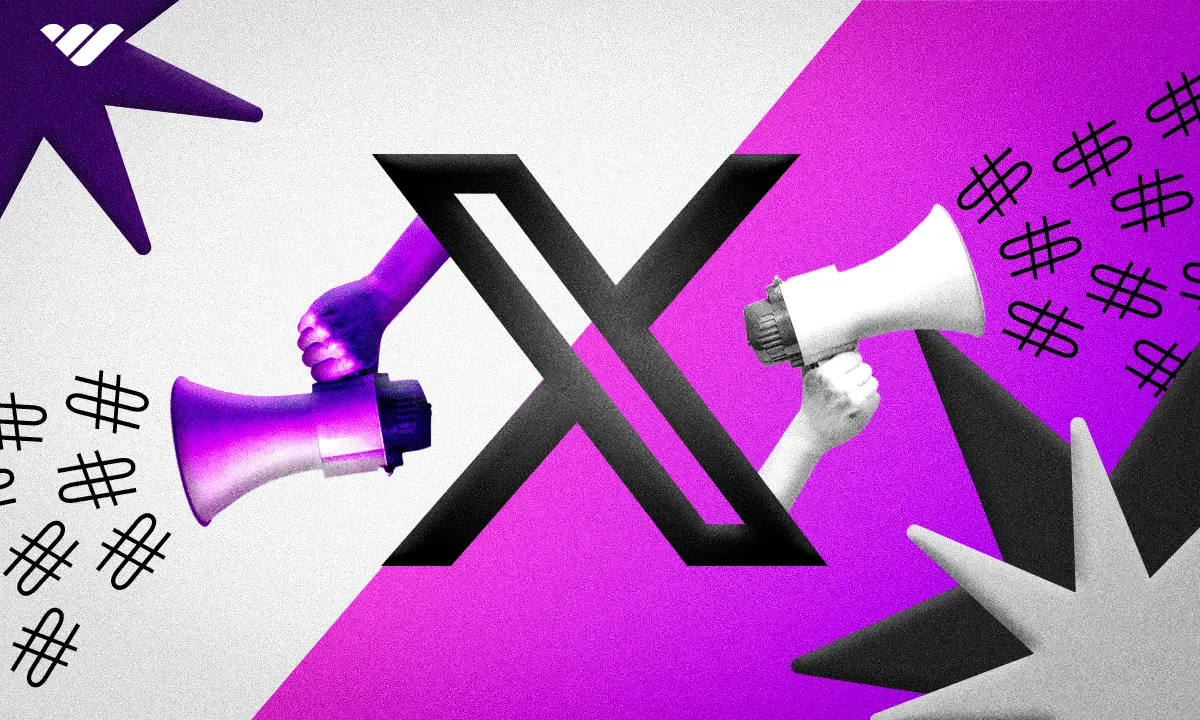
Running a successful X (formerly Twitter) account is crucial for many online businesses and creators, and you can offer tweet management services.
Not many businesses are great at actually interacting with people and pushing out tweets that go viral.
If you believe in your communication and social media management skills, this is a great online business idea.
- What you need: Strong writing skills, knowledge of trends, scheduling software (e.g., TweetDeck, Hypefury), clients
- How much it costs: Free to around $50/month for scheduling tools
- How much you can earn: $300–$3,500 monthly per client, depending on content quality and audience growth
- How to start: Make a portfolio of your services. Send this out to Twitter accounts. Personalize your outreach by writing a free Tweet for them.
Pro tip
Specialize in a higher-paying niche like personal finance, entrepreneurship, or tech startups where clients value expertise that clearly boosts engagement and growth.
35. Social media ghostwriting
If you’re good with words and are familiar with the copy that performs well on social media platforms, you can make money by offering ghostwriting services.
Each platform has different styles: X is more casual and in-depth, particularly with threads, LinkedIn can be more concise and highlights expertise, and Instagram is often story-based and emotionally engaging for reels.
You can choose to be a platform specialist or offer ghostwriting services across different channels.
- What you need: Strong copywriting skills, familiarity with social media platforms (X, LinkedIn, Instagram), client management tools
- How much it costs: Minimal, $0–$100 for scheduling software and outreach efforts
- How much you can earn: $500–$5,000+ monthly per client, scalable with multiple high-profile clients and premium packages
- How to start: Make a portfolio of your writing skills to send to potential clients
36. Influencer outreach specialist

As an influencer outreach specialist, your job is to identify, vet, and secure influencers who aren’t just popular but credible, authentic, and aligned with a brand’s mission, all while staying within budget.
Trust in influencers is declining, and viewers are increasingly skeptical of paid partnerships that feel inauthentic. This is an impactful (and lucrative!) online business idea.
- What you need: Strong knowledge of influencer marketing, analytical tools, communication and negotiation skills
- How much it costs: $50–$300 for analytical tools and initial client outreach
- How much you can earn: $500–$8,000+ monthly, depending on influencer deals and client campaign budgets
- How to start: Make a great profile or landing page for your services, and be sure to include a list of influencers you are already in contact with
Tech & development online business ideas
37. Web developer
Websites are then upgraded and improved constantly, so as a web developer, there’s always plenty of work out there.
Every business needs an online footprint, and the most controllable way to do that is with its own website.
Look at it this way: if 84 other people were to read this article and pick the other online business ideas on this list, that’s 84 new businesses who could hire you to set up their new websites!
- What you need: Web development skills, coding software, hosting/domain
- How much it costs: $50–$300 (software, hosting)
- How much you can earn: $2500–$10,000 monthly with multiple projects or high-value clients
- How to start: Create an online presence that shows off your work, and use this to reach out to potential clients
38. App developer
There’s plenty of opportunity if you want to freelance or start your own app development business – almost all companies have their own app, and they are spending big to get them built.
You’ll usually need some coding knowledge, but AI tools can help you bring ideas to life faster. Still, things like user logins and payment systems can be tricky to set up on your own.
That’s where Whop comes in. With the launch of the Whop App Store, you can build your app and plug straight into Whop’s built-in authentication and payment systems. Even better? Your app will instantly get exposure to thousands of creators on the platform.
If you’re ready to build, check out our developer documentation and get started. Using AI to develop? Our LLM docs will help you teach your AI exactly what it needs to know to build on Whop.
- What you need: Coding knowledge, app development software, device testing
- How much it costs: $0–$500 (software, hosting, testing devices)
- How much you can earn: $500–$10,000 monthly depending on complexity and number of projects
- How to start: Think about the type of app you want to build and check what's already on the market — then make your app!
39. Sell SaaS
I myself tried dropshipping, I tried FBA, but as someone short on cash at the time? I realized these were very cash dependent businesses.
So I took the time to learn a skill – SaaS marketing.
— SaaStronaut, SaaS service builder
Software-as-a-Service has really taken off in recent years, and it’s been one of the fastest-growing online industries.
If you’ve got some development skills or just a great idea, you can translate that into a fast-growing business and start making money with SaaS.
- What you need: Coding knowledge or development team, domain/hosting, marketing budget
- How much it costs: $500–$5,000+ (initial software development, marketing)
- How much you can earn: $1000–$20,000+ monthly, scalable depending on product popularity
- How to start: Map out your SaaS product, stack it up against what's already on the market, and get your team ready to start building
40. Test software for bugs
If you have the requisite skills and resources, you could become a bug tester, either on a freelance basis or by setting up your own company.
If you’re in the tech field, you’ll know how crucial software testing is. No independent developer or software company can survive without rigorous testing.
Bigger development firms can devote plenty of resources to bug testing, but smaller firms will be happy to take you on on a contract basis.
- What you need: Testing skills, bug-reporting software, computer
- How much it costs: Free to $50 (software)
- How much you can earn: $100–$3,000 monthly based on client volume
- How to start: Check out sites like YesWeHack and BugCrowd to find bug bounties
Pro tip
If you have an eye for finding bugs, you could also look out for glitch deals or price errors. Groups like Bandar’s Bounties pay for anyone to find and submit this type of info.
41. Tech support/coaching
If you're competent with a computer, then tech support is a super easy business idea that can bank you a lot of cash.
College kids are making a significant amount of money showing the older generation how to use technology — specifically AI and social media.
This a pain point that you can solve and get paid for, and you don't need to be an expert— you just need to be a few steps ahead.
— Online tech coach and business owner
The beauty of this opportunity is that demand is everywhere: from grandparents wanting to video chat with family to small business owners struggling to leverage AI tools for their operations.
- What you need: Basic tech skills, patience for teaching, video calling software, simple scheduling system
- How much it costs: $0–$100 (basic software subscriptions and marketing materials)
- How much you can earn: $30–$75 per hour for individual sessions, $500–$3,000+ monthly depending on client base
- How to start: Create a simple website offering tech tutoring services, develop a list of common problems you can solve (AI tools, social media setup, smartphone basics), and start marketing to local seniors and small businesses through community boards and social media.
42. Provide IT consultant services
IT consultants help businesses with IT-related problems. Storage, hosting, CRM, internal networks, and more.
A huge chunk of businesses use computers and other digital components – but not all of them are good at it.
One of the easiest ways to offer IT consultancy services to clients is by creating a whop for your business, and adding the Calendar Bookings app.
Your clients can join for free, book a session with you, and you can get started on the job.
- What you need: IT expertise, remote access software, reliable communication channels, a professional website or Whop page
- How much it costs: Around $100–$500, primarily software tools and setup costs
- How much you can earn: $500–$10,000+ monthly, scaling quickly if you secure corporate contracts
- How to start: Create a whop for your services, or sign up to freelance platforms
43. Create and sell no-code websites
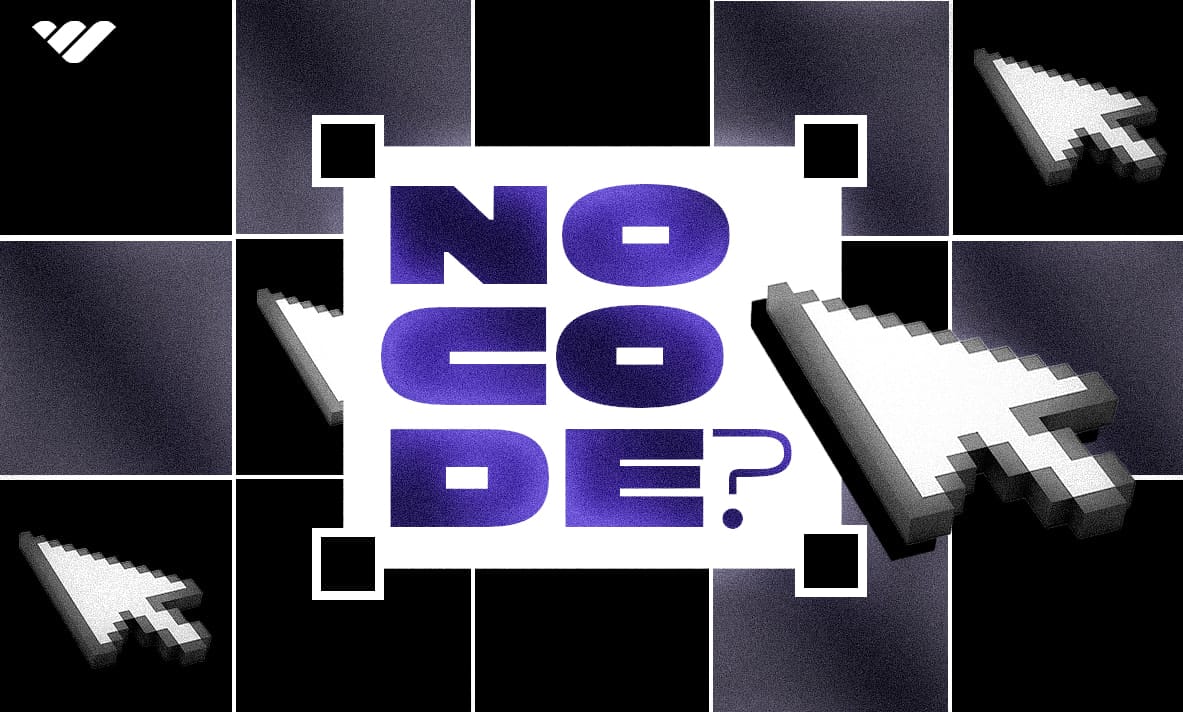
Before AI services became popular, you had to have web development skills to create a website.
That's not the case anymore. If you're interested in AI platforms, you might've heard the term 'no-code website' before. Building no-code websites with AIs is something everyone can do.
If you're interested in this idea, make sure to check out our guide on creating no-code websites (or apps) using Bolt.new and hosting them for free on Netlify.
- What you need: No-code platforms (Webflow, Bolt.new), creative marketing strategy, basic web-design skills
- How much it costs: $0–$100, with free trials and basic plan options readily available
- How much you can earn: $500–$5,000 per month, depending on your sales strategy and client base
- How to start: Play around with AI until you're confident enough to sell your website services
44. Create automation programs and sell them
Online automation can mean a couple of things. It can be using a Python script to quickly handle a task that would otherwise take hours or creating an automated AI agent to run your desired workflow 24/7.
If you have a knack for software/web development, you can offer to create automation solutions for their tasks.
- What you need: Coding or automation skills (Python, Zapier, Make), a Whop page or professional website
- How much it costs: Minimal ($50–$200), primarily development tools and platform subscriptions
- How much you can earn: $1500–$10,000+ monthly, highly scalable depending on the complexity and niche of your automations
- How to start: Search freelancing platforms like UpWork and Fiverr for clients
45. Build browser extensions
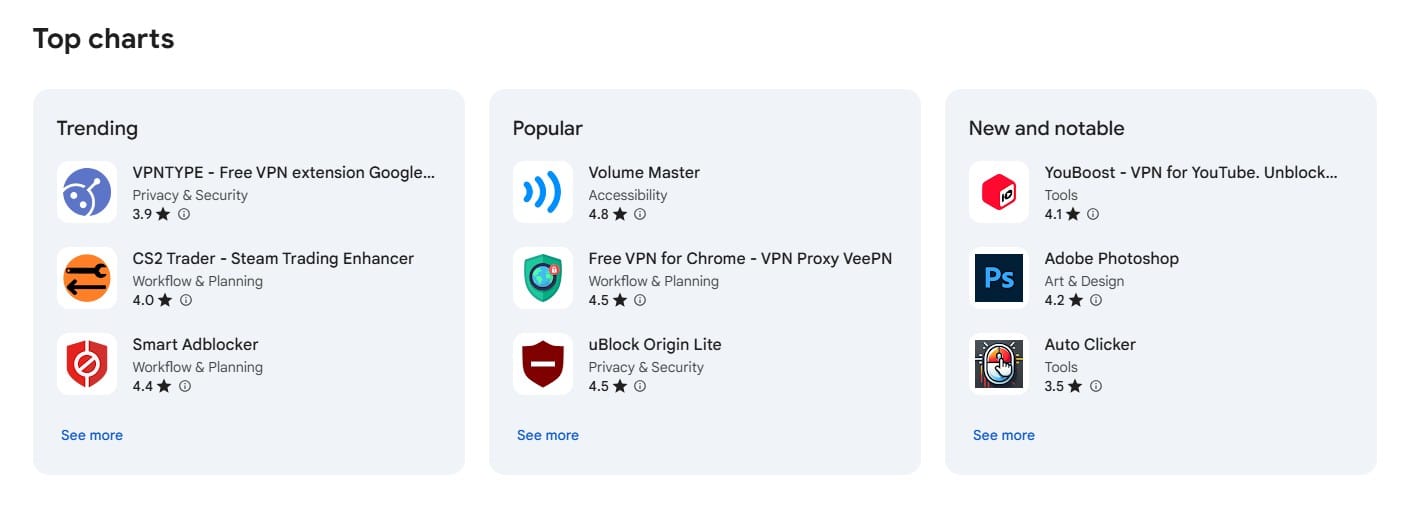
Building browser extensions is another way you can make money from SaaS (or even just one-time payments).
You need web development skills to make these extensions. However, these days, vibe coding helps – just be very careful to do it right.
Once you've built an extension (or a bunch of them), you can list them on your own whop, on the Chrome Web Store, or even on Reddit. It all depends on how niche the extension is. If you do end up selling it directly to customers, Whop invoicing can help you get paid securely.
- What you need: Coding skills, which you can support with tools like ChatGPT or Gemini, plus a whop or another place to sell extensions through
- How much it costs: The costs are minimal to none, depending on whether you use extra tools to build your extensions
- How much you can earn: $500-$10,000 per month, depending on how many extensions you publish
- How to start: Come up with a niche idea – big, saturated markets are hard to break into. Build the extension and advertise it on Reddit, then sell it through Whop or another platform
46. AI prompt engineering
Prompt engineering is a fast-growing role as businesses scramble to make the most of AI tools like ChatGPT, Midjourney, and Claude.
If you know how to craft prompts that get impressive results, you already have what it takes. It’s more about creativity and problem-solving than formal qualifications.
I just spent the last hour compiling a list of the most profitable digital products that I can sell to make an extra $10k a month in my business, and one thing stood out more than the others: AI prompts.
— AI prompt engineer
He also says thanks to white-label software, you don't need to know anything about AI prompts to make money with them.
Watch his video for all the info:
- What you need: Familiarity with LLMs (ChatGPT, Midjourney), strong prompting skills, a portfolio of successful prompt outputs
- How much it costs: Free to about $200 (AI subscriptions and platform fees)
- How much you can earn: Typically $500–$8,000 monthly, more with corporate or specialized clients
- How to start: Test prompts on different AI platforms and see what works, then put together a master list of your ideas
47. Launch an AI-powered agency
As an AI-powered agency, you can charge for setup, customization, and ongoing optimization services that will allow you to cash in with recurring revenue.
Businesses are turning to AI to take care of small tasks and scalable automations, but the average business owner doesn’t have the time or bandwidth to test and explore how exactly to leverage the power of AI.
That's where AI agencies come in.
We teach people how to build automations for businesses using a tool called n8n— it's kind of like building little robots that do the boring tasks for companies like emails, lead generation, and DMs.
— Jovan from AI Creators Club
- What you need: Website or whop to showcase your agency, in-depth skills with different AI tools, familiarity with automations and programming is a huge plus.
- How much it costs: $250–$1000 for AI and automation software and initial marketing budget
- How much you can earn: $1,000 per month in profit can be had with a single client, so getting to $10,000+ monthly is realistic within 6 months to 1 year.
- How to start: Create your website or whop and add in the AI tools that you have made, or a course on how to use AI
Pro tip
While it helps immensely to have technical skills, you can use third-party tools like Zapier and existing chatbots like ManyChat so you don’t have to start completely from scratch. Create internal templates and SOPs to make onboarding new clients easy so you can effectively scale to an abundant income.
48. Sell done-for-you automation setups
If you have experience with tools like Zapier and Make and can adapt quickly to current business needs and priorities, you can earn a great online income offering done-for-you automation services.
From lead capture forms, CRMs, ecommerce sales data, invoicing software, and accounting, the manual management of businesses often leads to burnout and inefficiency.
- What you need: Automation expertise (Zapier, Make, Airtable), defined service packages, client management system
- How much it costs: $100–$500 for automation software and initial client outreach setup
- How much you can earn: $1000–$10,000+ monthly, scalable revenue through ongoing management services
- How to start: Buy your automation software and make your business page
Pro tip
If you want to earn top dollar, position yourself as a systems expert that has niche expertise with high-income individuals or businesses. Display a clear ROI in terms of both time and money, and consider negotiating performance-based incentives for a win-win situation for both you and your client.
49. Create Discord bots and sell them

Discord bots add utility to communities, games, and trading servers. If you can code them and keep them updated, you can sell them repeatedly.
Maybe you can set up a bot for a specific gaming server, or something useful for a crypto trading Discord. The possibilities are endless.
You'll need coding skills, and in all likelihood, you'll have to keep your bot updated to keep your customers happy.
The best way to sell these is to create your own Whop community. You'll be able to connect it to a Discord server or host it directly on Whop. Whop will automate the payments, so you can sell your bot, chat with customers, keep them posted about upcoming features, and get paid all in one place.
- What you need: Coding skills and a platform to sell your bot, such as Whop or Top.gg
- How much it costs: $0 if you don't need any extra tools to create your bot
- How much you can earn: $300-$2,000 monthly, depending on how many bots you sell and how much you advertise
- How to start: Find a niche for your bot, create it, then beta test it, and finally launch it. Advertise it on platforms like Reddit and sell it through Whop or directly to customers
50. AI coaching

People pay to learn how to use AI tools effectively (businesses even more so).
You don’t need to be an expert; you need to be ahead of your students. Spend 2-4 weeks using these tools daily, then start teaching what you've learned.
- What you need: Working knowledge of AI tools (ChatGPT, Claude, Midjourney), teaching/communication skills, platform for delivery (Whop, Zoom, or course platform)
- How much it costs: $0-200 (primarily AI tool subscriptions and video software)
- How much you can earn: $500-5,000+ monthly, scaling significantly with online courses and corporate training sessions
- How to start: Use AI tools intensively for 2-4 weeks, create a simple workshop or consultation offering, share AI tips on LinkedIn/Twitter, and reach out to local businesses or your network
Creative online business ideas: Sell your design, art & media skills
51. Graphic artist
If you’ve got artistic skills, you can become a graphic designer entirely online and from the comfort of home.
Graphic designers typically work on logos, brand design, packaging, print materials, and illustrations to be applied in a commercial sense.
Check out our guide on how to make money as a digital artist.
- What you need: Digital design software (Adobe Illustrator, Photoshop, Procreate), a portfolio showcasing your style, platforms to sell your work (Fiverr, Whop, Etsy)
- How much it costs: $50–$500 (software subscriptions, optional drawing tablets)
- How much you can earn: $200–$5,000+ monthly depending on your client base and niche market
- How to start: Make your art portfolio and share it on your socials and website
52. Designer
We're expanding upon graphic design into other areas: UX/UI, web, animation – design work is a part of every product you can think of.
My best design work in life came from these sudden rushes of creativity that I was able to find by staying consistent with my craft.
— Ilya Miskov from Whop
- What you need: Design software (Figma, Sketch, Adobe Suite), creative skills, an online portfolio
- How much it costs: $50–$500 (monthly software, hardware)
- How much you can earn: $500–$10,000 monthly with multiple projects and clients
- How to start: It all starts with a design portfolio
53. Art consultant
Art consultants leverage their artistic background to help connect clients with works to buy.
Have an eye for art and design, but don’t think you can cut it as an artist? Art consulting might be a good option.
You can do this fully online, and it’ll require you to build and nurture relationships with artists, getting to know their styles and capabilities so you can get your clients exactly what they want.
- What you need: Art knowledge, network of artists, client outreach skills
- How much it costs: $0–$100 (minimal online setup, initial outreach)
- How much you can earn: $500–$5,000 monthly, based on commissions and client budgets
- How to start: Make sure your art knowledge is up to scratch, then start developing your personal brand as an art consultant
54. Sell your music
You can make money with music in more ways than you think — it’s not all about record deals or reality TV, thankfully.
Often, companies like ad agencies are looking to place tracks in their adverts, but all sorts of production firms need original music.
- What you need: Music production software (Ableton, Logic Pro), distribution platforms (Distrokid, Spotify, Apple Music, SoundCloud), musical talent
- How much it costs: $50–$500 (software, distribution fees, mixing and mastering)
- How much you can earn: $50–$5,000+ monthly, scalable with consistent releases and promotion
- How to start: Pick a DAW, make great tracks, distribute, and pitch to playlists or licensing sites
55. Photography
Even though a lot of photography gigs require your presence on location (like wedding photography), it’s possible to make photography a purely online business by selling photos online.
Stock photos are a popular niche, too, and there are a lot of platforms you can use to sell your own stock photos.
- What you need: Camera equipment, editing software (Lightroom, Photoshop), platforms to sell photos (Shutterstock, Etsy, Adobe Stock)
- How much it costs: $100–$5,000 (equipment, software)
- How much you can earn: $200–$5,000+ monthly, based on licensing, event shoots, or stock photography sales
- How to start: Start snapping, get a social presence to show off your snaps, and upload your photos to stock sites
56. Video editing
Video editing is a tough skill to learn, but it’s also a high-demand and profitable business. If you become a fast, creative editor, you’ll have your pick of projects.
Whether you’re interested in TV, corporate videos, or independent content creation, there are tons of opportunities in video editing and production.
Despite how difficult it is, it’s actually something you can pick up practically for free — a lot of the best video editing software tends to be free, and you can find some great tutorials on platforms like YouTube.
- What you need: Video editing software (Adobe Premiere, DaVinci Resolve, iMovie), editing skills, portfolio
- How much it costs: $50–$500 (software, basic equipment)
- How much you can earn: $500–$10,000 monthly based on clients and project complexity
- How to start: Get some good video editing software, show off your skills, and start applying for work
57. Audio editor

As an audio editor, you may be editing social media posts, audiobooks, or podcasts. It's similar to video editing, but without the visuals.
It requires a lot of skill since you need to ensure consistent sound quality across an entire production, cut out background noises, trim down pauses, and ensure that you don’t miss any gaffes that may have been made in the recording booth.
- What you need: Audio editing software (Audacity, Adobe Audition), audio processing skills, portfolio
- How much it costs: $0–$500 (software, audio equipment)
- How much you can earn: $300–$5,000 monthly, depending on projects and client base
- How to start: Buy your software, make your portfolio, and get yourself known in the industry
58. AI-powered presentations
Use AI design tools to create polished, branded slide decks for clients — from pitch decks and webinars to training presentations.
Tools like Beautiful.ai and Tome make creation faster, but clients still want a human touch to ensure accuracy and brand fit, so make sure you put your own spin on it.
- What you need: AI presentation tools, brand design knowledge, client intake process.
- How much it costs: $0–$100.
- How much you can earn: $500–$5,000/month depending on project complexity and client base.
- How to start: Offer a free “slide refresh” sample to attract leads, then upsell full deck design packages.
59. Voice over and voice acting
Voiceover work is everywhere: films, podcasts, games, explainer videos, sports content, and ads. If you’ve got a good mic, a strong voice, and an ear for quality, you can carve out a niche.
Voice acting is one of the most overlooked but powerful side hustles out there, and you can get started right from home.
You don't even need a full studio setup for this — all you need is a quiet room, a decent USB microphone, and free recording software.
— Experienced voice actor
He goes on to offer advice on how to start, building your profile, and pricing your work. Find it all in this short video:
- What you need: Microphone setup, recording software, clear vocal skills
- How much it costs: $50–$300 (microphone, basic setup)
- How much you can earn: $200–$5,000 monthly, scalable with larger projects or consistent clients
- How to start: Start by listening to different voice over actors and try to find your own style
60. Podcast editor
Podcast editors insert audio effects, clean up audio, cut segments, and prepare full episodes ready to release.
Since many of the modern podcasts come with videos as well, having video editing skills will help you get more clients if you're interested in becoming a podcast editor.
- What you need: Audio and preferably video editing skills
- How much it costs: $50–$300+ (headset, editing software, etc.)
- How much you can earn: $200–$3,000 per month, depending on clients and episode count/length
- How to start: Start by creating sample episodes or improving the ones you find on the web. Then, create a store page to display your portfolio and attract clients.
Writing & editing business ideas
61. Copywriting
In order to set yourself for the long run, it's really important to establish a niche. The best way to do that is to start as you mean to go on – whatever your interest is, there is a space for you as a writer.
— Keisha Singleton, Senior Editor at Whop
All businesses, no matter the niche, need copy. Websites, ads, products, product packaging: it all needs content and copy to entertain, inform, and sell.
Many copywriters work as freelancers, so there’s plenty of potential in gathering other copywriters under your banner and setting up an agency.
- What you need: Writing skills, SEO knowledge, clients, and word processing software
- How much it costs: Free to $100 (basic software, initial outreach)
- How much you can earn: $500–$5,000 monthly, depending on client base and content specialization
- How to start: Get known online — Tweet, post, share short videos and make a portfolio
62. Grant writing
As a grant writer, you’ll be completing applications on behalf of businesses or individuals hoping to gain certain financial grants.
You’ll need to come from an adjacent area, or at least spend some time researching grants, before you can start your grant writing business.
- What you need: Writing skills, knowledge of grants and applications, clients
- How much it costs: $0–$200 (minimal setup, research materials)
- How much you can earn: $500–$10,000 monthly, depending on number and size of grants secured
- How to start: Reach out to small businesses and let them know about grants they could apply for with your help
63. Technical writing
If you're more technical but you also fancy yourself as a writer, technical writing is a great opportunity. You can start by going it alone, and then broaden your business as your client base grows.
This one could go under copywriting, but most copywriters fall into the English major camp and can struggle to tackle in-depth engineering and scientific writing.
- What you need: Specialized knowledge (tech, science, engineering), writing software, and documentation tools
- How much it costs: $50–$200 (software, basic setup)
- How much you can earn: $1500–$8,000+ monthly, depending on workload, niche and complexity
- How to start: Learn everything you can about the tech you are writing about
64. Resume writing
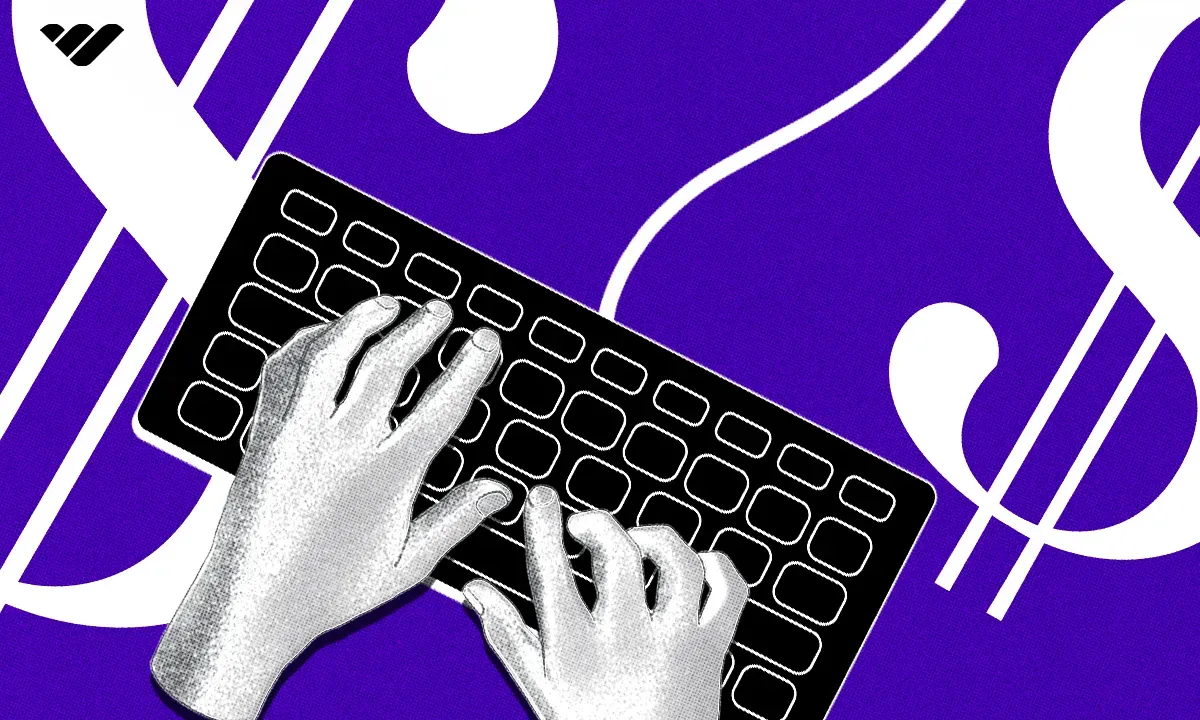
Resume writing is involves tidying (or entirely rewriting) the resumes and CV's of clients to boost their chances of employment.
It’s a tricky business model since your customers probably won’t come back to you for a while (since you’d hope they’re able to hold the job you help them get).
Still, the nature of economic cycles does at least mean that companies lay off tons of employees all too frequently — meaning more business for you.
- What you need: Writing and formatting skills, market knowledge of industries, editing software
- How much it costs: $0–$20 (either Google docs or Canva works)
- How much you can earn: $200–$5,000 monthly, scalable with client volume and premium packages
- How to start: Post in local business groups, college groups, and community groups to offer your services
65. Proofreader or editor
Every writer, brand, and creator needs editing support, making proofreading and editing low-cost and easy businesses to start online.
Most copywriting agencies will have their own editors on staff, but there’s no reason you can’t sell your services as a proofreader or editor of whatever written work you specialize in.
There are plenty of clients out there who understand the value of consistent, quality copy, and it’s them you should target.
- What you need: Excellent grammar and writing skills, client outreach. Editing software like Grammarly can help.
- How much it costs: Free to $100 if using editing software, outreach tools
- How much you can earn: $300–$5,000 monthly, depending on project sizes and volume
- How to start: Get your portfolio together and start sharing snippets of your writing on LinkedIn, Twitter, and other social networks
Pro tip
Copywriting is a huge field, and there are plenty of opportunities out there as a starting copywriter or editor. Don’t allow yourself to be pressured in terms of your per-word rates. Companies who try to low-ball you when signing up will replace you with a cheaper writer at the drop of a hat.
66. Translating business
If you know more than one language, you can turn this advantage into a business opportunity by becoming a translator.
I myself am fluent in three languages, and that has provided me with countless side hustle opportunities.
— Karina Egle, PR Specialist at Whop and freelance translator
Watch the video below for more advice:
Lots of companies need translators for a variety of things when they move into new markets, and bureaucratic requirements are a thing too.
Some countries need certified translators to sign off on paperwork when it comes to a variety of processes, and embassies could also be a great source of business.
- What you need: Fluency in two or more languages, translation software, and clients
- How much it costs: $0–$200 (minimal setup, basic software)
- How much you can earn: $200–$5,000 monthly based on language rarity and workload
- How to start: Make an online hub (you can use a whop for this) to meet with clients, take payments, and sell your services
67. LinkedIn optimization services
If you’ve got experience in hiring, recruiting, or simply making someone shine on paper, you could run a business offering LinkedIn optimization.
Start with one-off services like resume rewrites or profile audits, then level up to packages that offer deeper strategy and recurring income.
The job market’s crowded: graduates, job switchers, and career pivoters are all vying for attention. That’s why more people are turning to career pros to sharpen their resumes and LinkedIn profiles.
- What you need: Recruitment experience or HR background, strong writing skills, LinkedIn proficiency
- How much it costs: Minimal, $0–$100 for basic software and outreach
- How much you can earn: $300–$5,000 monthly, scaling with bundled services and recurring career coaching packages
- How to start: It all starts with networking, so make sure your own LinkedIn profile is up to date
Pro tip
Offer and publicize free audits or critiques to demonstrate value upfront, then upsell personalized optimization packages or ongoing career guidance subscriptions.
68. Create internal wikis/documentation for other businesses
This hustle lets you get paid to turn a company’s chaotic processes into clear internal wikis and handbooks, so their team stops wasting time asking repeat questions.
Businesses buy this because good documentation speeds up onboarding, training, and daily work.
If you have experience in people operations, technical writing, or organizing processes based on business type or team needs, there’s a growing opportunity to help companies build and manage their internal knowledge from the ground up.
Use platforms like Notion and Google Drive/Docs to create interconnected pages, or if you want to go the full-on-wiki approach, you can create MediaWiki-based websites with user authentication for your clients.
- What you need: Writing skills and knowledge on using platforms like Notion, Google Drive, Google Docs, or even MediaWiki in some cases
- How much it costs: $0–$100 (free tiers of software, optional subscriptions to platforms like Notion)
- How much you can earn: $500–$2,000 per project, depending on its scale and complexity
- How to start: Build a wiki or internal documentation sample for your portfolio, and start with small businesses to get experience
69. Work as a transcriptionist & closed captions expert

You make money by turning audio and video into clean text and subtitles for creators, podcasters, and companies.
They pay you because accurate captions improve accessibility, SEO, and watch time. If you're naturally detail-oriented, you might enjoy working in transcription.
It helps accessibility, but also things like SEO and content repurposing – for example, longer videos that are clipped for TikTok often need captions.
This is a good gig if you're a fast typist with good listening skills. You'll usually be paid per minute of recording, which is not equal to a minute of your own work.
Every minute of video or audio will take longer, but these jobs can still be good if you're quick.
Advertise your services on Whop or a similar platform, or pick up gigs from websites where clients can offer them. Some of the popular options include TranscribeMe, GoTranscript, and Rev.
- What you need: A computer, a solid pair of headphones, strong listening and grammar skills, relevant software depending on platform
- How much it costs: $0 to $200, depending on whether you need to pay for software or hardware first
- How much you can earn: $100 to $3,000 – the pay varies based on volume of work and your niche
- How to start: Offer transcription packages for podcasters or YouTubers, reply to ads looking for transcription experts, and apply to transcription-related platforms
Virtual assistance & remote support business ideas
70. Virtual assistant
Virtual assistants earn by handling admin, email, scheduling, and ops tasks remotely for busy founders and teams.
Clients pay you because you save them hours every week on low-leverage work.
I get to help people, I get to work my own hours, and I get to work from home.
— Matthieu Ratrimoson, online virtual assistant
Since VA opportunities are often beginner-friendly remote freelance gigs, they're a great solo online business idea. You could easily find yourself building this out into a full agency before too long.
You don’t even need much experience in the field before going in, although a good understanding of the corporate world and the knowledge of what managers want will help get you off on the right foot.
- What you need: Organizational skills, communication tools, client outreach
- How much it costs: $0–$100 if paying for premium project management software like Slack, Notion, or ClickUp
- How much you can earn: $300–$5,000 monthly depending on number of clients and task complexity
- How to start: Start by reading this: How you can create your virtual assistant business on Whop
71. Customer service agent
Customer service jobs involve handling customer enquiries and complaints either by phone or live chat, remotely.
While freelance roles might not pay heaps or offer fast career growth, they can still be a solid online business — especially if you enjoy helping people and solving problems every day.
- What you need: Communication skills, customer service platforms like Zendesk, phone/internet
- How much it costs: Free to $50 (basic software)
- How much you can earn: $200–$3,000 monthly based on client volume
- How to start: Decide if you want to run this business as a solopreneur or a freelancer, and then make a list of the services you will offer
72. Recruitment agency
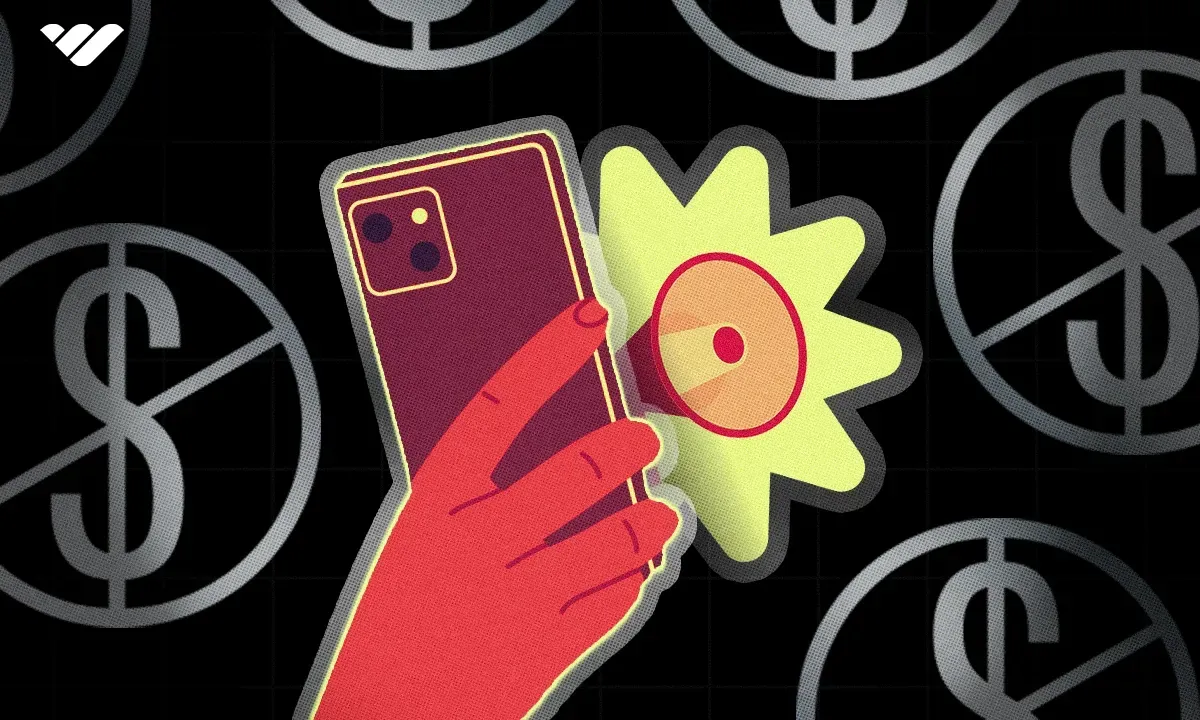
Recruitment is a great online business idea because most companies now outsource their hiring, and many are looking for a more personal, affordable option than big agencies.
If you’ve worked in a specific industry, you already have an edge: you know what good candidates look like and what employers really want.
As a freelance recruiter, you can run your entire business online, helping companies find the right people and helping job seekers stand out — without ever setting foot in an office.
- What you need: Networking skills, recruiting software (LinkedIn Recruiter, ATS), communication skills
- How much it costs: $150–$500 (software, outreach tools, potential marketing budget)
- How much you can earn: $500–$10,000+ monthly, depending on placements and commissions
- How to start: Make sure you have a good list of contacts, then start shaping your offering
73. Digital decluttering consultant
Help individuals and businesses clean up and organize their digital lives — from inbox zero to file structure optimization, password management, and cloud storage.
Digital overwhelm is a real productivity killer, and clients will pay for systems that save them time.
- What you need: Organization skills, knowledge of cloud storage tools, task/project management apps.
- How much it costs: $0–$50.
- How much you can earn: $300–$5,000/month, depending on whether you serve individuals or teams.
- How to start: Offer a free 30-minute “digital health check,” then upsell ongoing maintenance packages or 1:1 consulting.
74. Remote sales
Andres from The Impact Team
It is the best way to make money online as a beginner. So how do you get into it?
Find three companies you love, find the employees, and start reaching out to them, introducing yourself, why you love the company, and how your motivation fits how the company can grow.
— Andres, earns $170k a month profit from high-ticket sales
A lot of companies and entrepreneurs outsource their sales. So, you can look into setting up a remote sales agency that can take care of a variety of key sales processes on behalf of your customers.
You might end up taking on many of the less glamorous sales functions on behalf of your clients, but it’s still a lucrative online business if you get the mix right.
Check out how Alexis Seleste went from $0 to $100k per month as a remote closer.
- What you need: Sales skills, CRM software, lead lists or lead generation tools
- How much it costs: $50–$200 (CRM subscriptions, minimal marketing)
- How much you can earn: $500–$10,000 monthly, plus commissions for high-ticket deals
- How to start: Start by learning as much as you can about remote sales by taking a course or joining an online coaching academy
75. Lead generation
Lead generation is very time-consuming and often outsourced. That’s where you come in, helping different businesses by building lists of potential leads and then reaching out to them with tailored sales pitches.
You can do this for a big range of industries, and even influencers outsource lead generation these days — it’s definitely part of the remote sales universe, but worth its own mention because of how much potential for profit there is if you get good at this.
- What you need: Lead gen tools, sales and outreach skills, CRM
- How much it costs: $100–$500 (tools, software subscriptions)
- How much you can earn: $500–$5,000 monthly based on client count and deal structures
- How to start: Pick a niche, learn basic outreach strategies, and use tools like Apollo or Hunter.io to build and contact lead lists
76. Build whops for businesses/creators
New whops are being created every day by creators and big businesses – and setting them up could be an easy online gig.
Whop is easy to use, but knowing the right tricks can make your whop stand out.
If you have experience building whops and using the platform, you should give providing this as a professional service a try.
By knowing which apps to add, which pricing options to set up, and how to customize app visibilities, you can deliver whops that can stand out to your clients.
Plus, when you invite clients through your affiliate link, you'll earn ongoing commissions from their sales.
- What you need: Deep understanding of how Whop platform works, tips and tricks of building whops, expertise with the full range of apps in the Whop App Store
- How much it costs: $0
- How much you can earn: $50–$500+ per project based on the client and complexity of the whop(s)
- How to start: Create a whop, expand your portfolio, and reach out to potential clients who can benefit from having a whop
Start by creating your own whop and exploring everything you can do with this online business idea.
Consulting & professional services
77. Event planner
Event management involves planning private events like weddings or focusing more on the corporate sector. It's one of those skills that is extremely difficult to find, so if you’ve got it, use it!
The event space is growing again post-lockdown, but you’ll need to be organized and professional – having an established contact network is a huge plus.
This is something you can definitely manage remotely for the most part, but some in-person availability does help.
- What you need: Planning skills, contacts, and event management software
- How much it costs: $100–$500 (software, marketing)
- How much you can earn: $500–$5,000 monthly, scalable with experience and reputation
- How to start: Make a great visual portfolio of events you've planned and services you can offer
78. Virtual event planner
Corporate, self-help, and fitness online events are huge – and the bigger they are, the harder they are to manage. That's where virtual event planners come in.
There are plenty of virtual event platforms you can use to plan and host online events. You just market your services in the same way as IRL event planning, but target creators and businesses running online ticketed events.
- What you need: Online event platforms (Zoom, Hopin, Whop), event planning skills, communication skills
- How much it costs: $50–$300 (platform subscriptions)
- How much you can earn: $500–$5,000 monthly depending on event size and frequency
- How to start: Same as physical event planning — make a portfolio that shines
79. Bookkeeping/accountancy
Just about every business needs someone to take care of its books, and while most larger companies have entire teams of accountants, plenty are happy to take on freelancers.
How far you take it is up to you: simpler bookkeeping can be managed easily with the use of some simple software, but to take care of higher level accounts and ensure regulatory compliance you may need to get yourself certified.
- What you need: Accounting software (QuickBooks, Xero), relevant certification or training, client management system
- How much it costs: $100–$500 (software subscriptions, training materials)
- How much you can earn: $500–$10,000 monthly based on clients and complexity
- How to start: Get a professional website made and showcase the services that you offer
80. Online teaching and tutoring
If you’ve got knowledge in any subject, turning it into an online teaching or tutoring business is a smart move.
Remember, it doesn't have to just be academic teaching. You can teach anything online.
For anyone making money online, if you're in a career and you've been doing that career for a long time, the next logical step is always going to be to teach others how to do what you do and create an additional source of income for yourself.
— Volky, Digital Nomad Community
Schools provide built-in demand, but corporate clients often have budgets set aside for training, too. Tools like Zoom, Google Meet, and Loom make it easier than ever to teach remotely.
Volky from Digital Nomad Community
- What you need: Knowledge or expertise in a subject, video conferencing tools (Whop, Zoom, Google Meet), platform (Whop, Teachable, tutor.com)
- How much it costs: $0–$100 (minimal tech setup)
- How much you can earn: $100–$5,000+ monthly, scalable based on student numbers and pricing
- How to start: Create your online platform (a whop is great for this) where you can easily meet people online
81. Teach languages
Communication is a basic need, and if you know a foreign language, you’ll often be able to charge a good rate for your services.
Don’t worry if all you speak is English: it’s the language most in demand, both from people moving to English-speaking countries and needing help, to professionals working abroad and needing to learn English as their companies globalize, and even people hoping to adopt English as their primary language.
- What you need: Fluency in at least two languages, video conferencing tools, teaching materials
- How much it costs: Free to $50 (basic software)
- How much you can earn: $200–$5,000 monthly, scalable with group sessions and specialized classes
- How to start: Check out our full guide to teaching English online for more information
82. Consultancy

If you’ve got expertise or experience in any niche, consider consulting.
Basically, if your company struggles to replace you, you might be able to use your current expertise to immediately transition to a higher-paying consulting role.
This can then lead to broader opportunities where you offer that same service to other companies, and before you know it, you’ll be considering taking a couple more consultants on board to help you share the workload.
- What you need: Expertise in a niche, communication tools, professional online presence (LinkedIn, personal website)
- How much it costs: $0–$200 (basic setup, marketing)
- How much you can earn: $500–$10,000+ monthly based on industry and expertise
- How to start: Show off your stuff on socials, make a website, and create your packages
With Whop you can create your own whop and use it as the hub for your consultancy business, complete with DMs, video calls, file sharing, and payment processing.
83. Tax expert
If you’ve got a background in tax, or even finance or law, you might look at becoming a tax expert or tax consultant.
Tax season is a source of plenty of headaches, which also means that it can be a fantastic opportunity.
You can provide your services to both individual and business clients looking for help with managing expenses and deductions, and optimizing their tax returns.
- What you need: Tax preparation skills/certifications, tax software, client network
- How much it costs: $50–$500 (software, training)
- How much you can earn: $500–$10,000 monthly based on complexity and client count
- How to start: Build out your website with your services and start targeting small businesses with paid ads
84. Financial advising

A financial advisor is a trained and certified professional who is allowed to advise clients on investments and wealth-building.
The requirements for getting qualified may vary based on your location, but it’s not something you need to be a banker or stockbroker for.
As a financially-skilled individual, you can work independently and take on clients, manage their wealth and investment portfolios, and grow your own through your expertise.
- What you need: Certification, financial knowledge, advisory tools
- How much it costs: $100–$500 (certifications, software)
- How much you can earn: $1,000–$10,000 monthly depending on client assets managed
- How to start: Share your skills across socials and the clients will come to you
85. Professional trading
If you’re not up for the professional education and certification that goes into becoming a financial advisor, focus on building your own wealth instead.
You'll need starting capital, both in terms of cash as well as a computer, screens, a fast internet connection, and optional subscriptions to advanced data feeds.
Trading gives you options: invest the time to trade day-to-day, or make some longer-term deep value plays and emulate legendary online traders like the Roaring Kitty.
I myself started trading with just a $20 deposit, and I kept depositing just a little more here and there with each paycheck, just as I could afford to.
— Michael Poarch, successful online trader and creator
Watch his video above for more insider info on getting started with trading.
And check out these top trading whops and trading Discord servers for even more trading advice and education.
- What you need: Capital, trading software, market knowledge
- How much it costs: $500–$10,000+ (capital, subscriptions for software or trading communities)
- How much you can earn: $500–$20,000+ monthly, highly variable. You can even lose money as a trader–in fact, most do, so exercise caution
- How to start: Before you start get all the advice you can through courses, communities, and online education
86. Career advisor
As a career advisor, you can host your services entirely online, offering up career advice in ebooks and courses, and live video calls for face-to-face (virtual) sessions.
Have you had success in your career? If the answer is yes, you can offer career advice to others for a fee.
You don't need to be a CEO or TedX speaker to give career advice: clients can come to you for help with interview prep, salary negotiation, and team management skills.
You can also help clients find their ideal career path based on their experience and interests.
- What you need: Career experience or HR background, video conferencing setup, digital marketing strategy
- How much it costs: Free or minimal (up to $50–$100), using free or inexpensive video conferencing
- How much you can earn: $200–$3,500 per month, significantly more if offering group courses or webinars
- How to start: This is another business that you can build up by showing off your skills on socials and then taking on paying clients
87. Esports coach

Turning your immense League skills into a source of income might sound like a dream, but it's not. These days, coaching games is a legit job, and you can make some good money off of it.
If you're highly skilled in a specific game and can prove it (either through tournament wins or high ratings), there are people out there who will pay you for coaching. You'll be going over replays, watching their streams, and working on their strats 1:1.
- What you need: Deep knowledge of one or more competitive games, such as League of Legends, Valorant, CS2, Fortnite, or Rocket League. You'll also need a platform to sell your services – Whop is your best bet
- How much it costs: Free to moderate. You might have to spend up to $300 on a good headset, microphone, and webcam if you don't have them
- How much you can earn: $500-$2,000+, depending on how popular you are among the playerbase
- How to start: Make social media profiles and start posting content. Stream on Twitch for exposure. Offer coaching packages, courses, and streams via Whop.
88. Virtual personal trainer
One great opportunity for making money online is with online fitness training.
As a PT or fitness enthusiast, you could offer up your fitness skills with an online fitness community or coaching.
Share your skills with a self-led online course and pre-recorded classes for time-poor clients. Or, virtually train clients in real-time through live video sessions.
If you're a fitness creator with a six pack, you're sitting on a six-figure business. Here's the truth: 99% of fitness creators fail to monetize their community.
— Online fitness coach and content creator
Watch the video for his step-by-step on how to monetize your fitness community.
- What you need: Fitness certification or relevant experience, virtual conferencing tools, client management software
- How much it costs: Minimal setup ($50–$300), primarily software and basic equipment
- How much you can earn: $300–$6,000 per month, scaling with online group training and specialized coaching programs
- How to start: Make sure you have your training up to date, then create a virtual space for your fitness coaching
89. Create and sell meal plans online
Selling meal plans is a great online money-maker. Anyone with a background in nutrition can create and sell meal plans online.
There are multiple ways that you can do this, including selling a subscription to a weekly or monthly meal plan, creating and selling macro-personalized plans, and selling niche meal plans for specific dietary requirements.
This online business idea can be used in conjunction with online fitness training and life coaching services.
- What you need: Nutrition expertise, meal-planning software, attractive website or whop
- How much it costs: $50–$200, mostly software and initial marketing
- How much you can earn: Typically $200–$5,000 monthly, scalable with recurring subscription-based customers
- How to start: Share photos and videos of your meal plans online, then start creating your virtual plans
Pro tip
Offer tailored meal plans for trending diets (keto, vegan, intermittent fasting. Such targeted offerings attract niche communities and boost subscription retention.
90. Become a digital advertising consultant

Paid advertising is a core pillar of most online businesses.
Nearly every business idea we've mentioned relies on some form of ads — whether it's social media campaigns, pay-per-click (PPC) search ads, or display ads across websites and apps.
While platforms like Meta, Google, and TikTok make it easy to launch ad campaigns, running successful ads takes real strategy.
You need to understand platform-specific algorithms, research your audience, and craft ads that grab attention and drive results.
- What you need: Ad platform experience (Facebook, Google, TikTok, etc.), marketing skills, client outreach methods
- How much it costs: $50–$500 (testing ads, software subscriptions, initial client demos)
- How much you can earn: $300–$5,000+ monthly, depending on clients, campaign budgets, and the number of campaigns you run
- How to start: Learn how platforms like Facebook Ads Manager and Google Ads work, create a portfolio showing your results, then reach out to creators and small businesses
91. Collect and sell data

If you know how to gather insightful niche information with methods like scraping or surveys to build on top of publicly available data, you can package and sell this as a product.
Even though AI models and search engines have plenty of data to work with right now, the demand for hand-collected, unique datasets still remains strong.
Make sure to choose a niche with a clear need for precise data that can’t easily be found online or even using an AI tool–think Airbnb pricing trends in a specific city or a curated list of influencers including their behind-the-scenes engagement rates.
- What you need: Data scraping tools, survey software, analytical skills, sales channel (newsletter, whop)
- How much it costs: Minimal ($50–$200), mainly for tools and surveys
- How much you can earn: $300–$5,000 monthly, higher if your data solves clear market needs
- How to start: Pick a niche with unmet data needs, collect unique insights (via scraping, surveys or manual research), and sell them through newsletters or marketplaces like Whop
92. Personal brand coaching

If you’re skilled at storytelling, niche targeting, and monetisation, you can turn those strengths into a thriving business as a personal brand coach.
Building a personal brand is a major priority for creators and entrepreneurs — which is why many hire coaches to help them grow.
Your role as a personal brand coach can also be more on the financial side if you’re good at identifying and executing monetization opportunities, which might include digital products, memberships, or one-on-one coaching.
- What you need: Strong personal branding expertise, a professional online presence (LinkedIn, website), coaching platform (Whop, Kajabi, Zoom)
- How much it costs to start: $50–$300 (initial setup, website, video conferencing tools)
- How much you can earn: $500–$10,000+ monthly, significantly more with premium coaching packages or group workshops
- How to start: Share results from your own brand or client work, then offer 1:1 sessions or audits via a simple site or platform like Whop
Pro tip
Offer free, value-driven webinars or lead magnets to build trust and attract clients who are willing to invest more in high-end personal branding strategies.
93. Business AI consulting
If you're experienced with AI, whether that be prompt engineering or training custom models, you can offer AI consultant services to businesses that are looking to integrate the future into their business.
A few years ago, AI struggled to form basic sentences. Now it helps billion-dollar companies streamline their workflows and boost efficiency - but not everyone can keep up with these rapid changes.
While knowing AI basics is essential for consultants, many businesses need more than just good prompts. By staying up to date with the new AI technologies and having a firm understanding, you can start finding clients in no time.
- What you need: Strong understanding of AI technologies
- How much it costs to start: $50–$300 (subscriptions to AI tools)
- How much you can earn: $1,000–$10,000+ monthly, depending on client size
- How to start: Start by finding a special niche and then create case studies where AI proves a return on investment. Then, create a store page where clients can find your work and services
94. Organize and monetize mastermind sessions

Mastermind sessions are small, focused meetings where like-minded people come together to share ideas, support each other’s projects, and work toward their goals.
If you're an expert in a particular field — or you're great at bringing people together — organizing and monetizing mastermind sessions can be a smart business move.
When done right, they’re in high demand, especially among professionals looking to connect with others in their industry.
- What you need: Expertise in a field, organizing skills, and the ability to manage a small group of people effectively
- How much it costs to start: $50–$150 (marketing)
- How much you can earn: $200–$1,000+ per session, depending on how much marketing you did and the individuals included in the session
- How to start: Choose a niche to specialize in, create solid marketing campaigns, and start with small groups to build up a reputation in your field
Run mastermind sessions with Whop and start making money online.
95. Virtual co-working space host
Run a paid online community where remote workers join live video “focus rooms” with accountability timers, networking, and skill-sharing sessions.
People crave structure, accountability, and social connection when working from home.
Host communities for coworking on Whop, using apps to build out features like chats, live video, file sharing, announcements, giveaways, and more.
- What you need: Video conferencing platform (Whop, Zoom), scheduling tools, and community management skills.
- How much it costs to start: $50–$200.
- How much you can earn: $300–$5,000+/month via memberships.
- How to start: Pick a niche (e.g., creatives, solopreneurs), host themed work sessions, and promote through LinkedIn and productivity communities.
Launch your online business with Whop
Ideas only matter when you act on them — and with Whop, starting your online business is effortless.
Your whop becomes a ready-made storefront with built-in discoverability and an audience waiting for what you have to offer.
Sell coaching, templates, memberships, picks, writing, SaaS, courses, or any other digital product — all from one place. You can even manage your payments, offer financing, and process invoices and payouts natively.
Whop gives you everything you need to launch, sell, and get paid online.
Online business FAQs
How do I launch my online business idea?
Starting a business can feel intimidating — but it doesn’t have to be. Here’s how to keep it simple and structured:
1. Start as a side hustle
- Most ideas listed above can be launched as a sole proprietor.
- Great for testing the waters without heavy commitment.
- Many are low-cost and can be started with minimal setup.
2. Upgrade your legal structure (when you’re ready)
- Sole proprietorships are fine early on — but come with personal liability risks.
- Consider forming an LLC to:
- Limit your personal liability
- Take advantage of pass-through taxation
- Boost credibility with customers and partners
3. Don’t forget the essentials
- Register for an EIN (Employer Identification Number)
- Choose a business name that aligns with your brand or niche
- A strong name = free marketing power
- It helps with memorability and trust
Should I start an online business?
Short answer? Duh. Why? It’s easier and more achievable than ever.
You don’t need to go big to win
- You don’t need to become the next tech billionaire.
- Just a few hours a week could double or triple your income.
- Set realistic goals, and you’re far more likely to succeed.
Tech has made it stupid-easy
- Most online businesses today can be started instantly.
- Want to edit videos? Download Resolve, watch some YouTube tutorials.
- Dream of being a YouTuber or streamer? Use your phone or screen recorder and go live.
- Want to sell digital products or services? Create your whop.
You can start small, scale smart, and build something real — without quitting your day job or breaking the bank.
How do I create an online business plan?
Before you build, plan — and plan smart.
1. Start with a simple business plan
- Writing it down helps clarify your ideas and goals.
- In some areas, it’s even legally required to file a plan when registering a business or freelancing license.
- Check out how to create a business plan and also look over these business plan templates to get started.
2. Know your customer inside and out
You gotta know who you're selling to – i.e, your target demographic.
"A big step to growing an online business that is easily overlooked is to be completely obsessed with your customer: know their habits, know their needs — inside and out,"
"Being able to answer clearly: why you are the right person to help solve their problems through your products or services? If you can nail this, everything else follows!"
— Courtney Gras, Director of Higher-Ed Operations at Whop
This is the foundation of a business that actually grows.
3. Plan your tools and setup
Think about what your business needs to run day-to-day:
- Print-on-demand (POD):
Marketing platform, storefront, printing & shipping partners - YouTube channel:
Phone or camera, mic, editing software, thumbnails, YouTube account
Some businesses (like YouTube) run mostly on one platform.
Others need multiple tools — payments, hosting, customer service, etc.
Tip: Using a single provider (like Whop) to bundle these services can simplify everything.
4. Don’t burn yourself out
Running a business can be thrilling — and exhausting.
- Stay mindful of your limits
- Take breaks, protect your mental health
- Don’t forget to make time for friends, family, and real life
Even though it’s worth putting time and energy into your work, don’t neglect family, friends, or your own mental health.
Next reads:
Looking for more business advice? Check out these articles and guides:
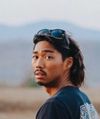
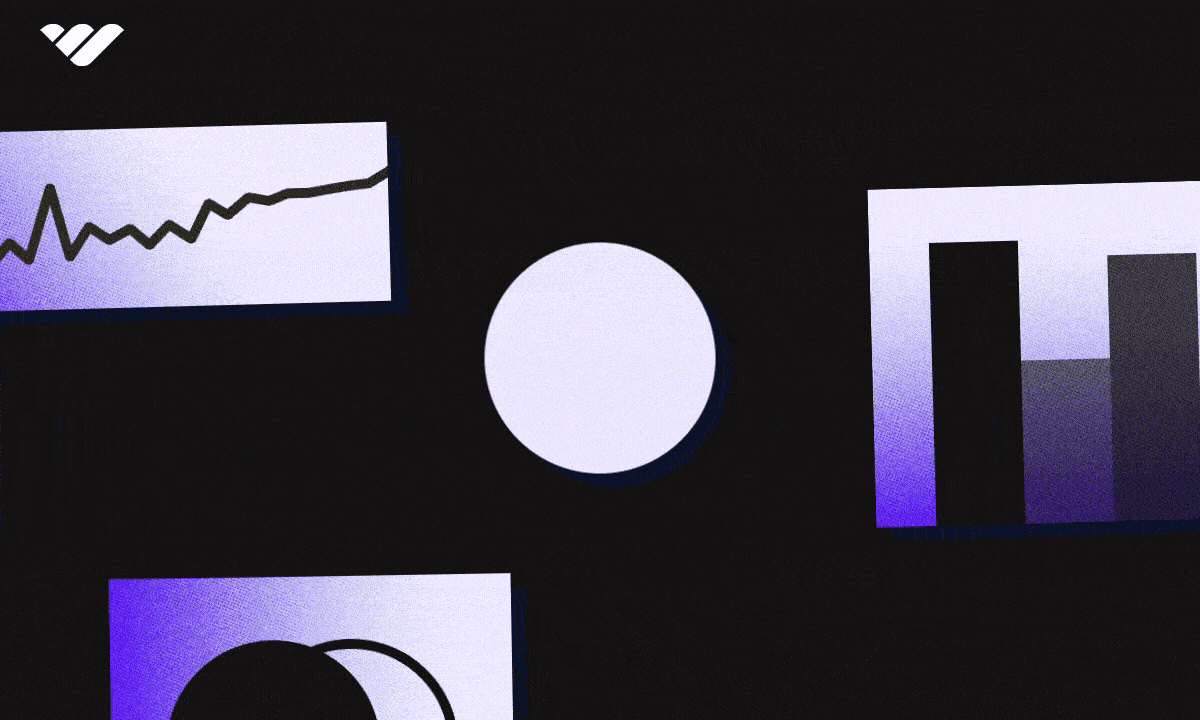


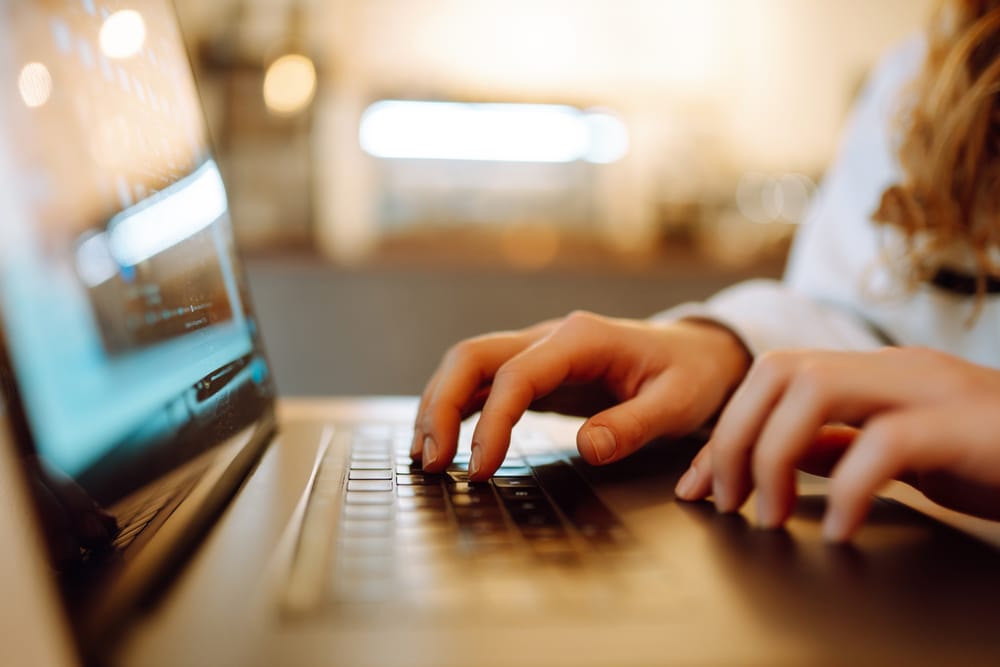





![80 remote side hustles to make money from anywhere [2026]](/blog/content/images/size/w1000/2025/11/tablet-designer-home-opt.webp)



